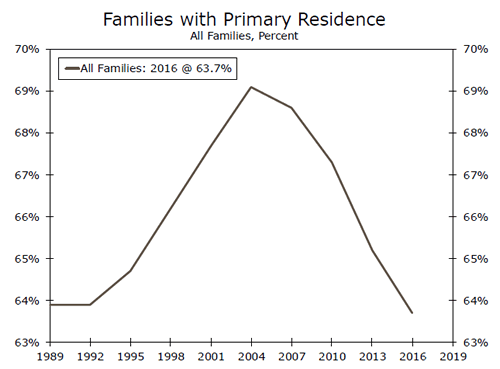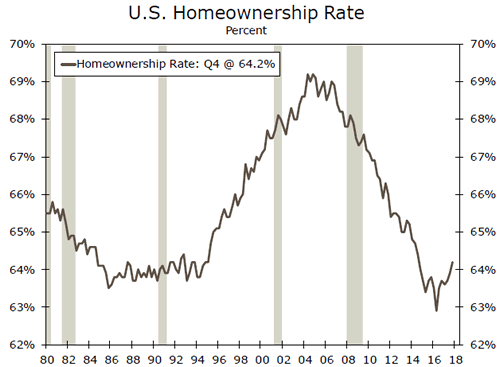U.S. Review
Lite On Economic Data, Heavy on Treasury Supply
- Existing home sales fell 3.2 percent in January following a 2.8 percent decline in December. Tight supply continues to play a role in holding back sales.
- The Conference Board’s Leading Economic Index rose 1.0 percent in January following a 0.6 percent rise in December. The measure continued to support the case for continued robust GDP growth.
- The big story in Treasury markets this week was a sizable pickup in gross Treasury issuance. With larger budget deficits on the horizon, Treasury yields continue to move higher.
Lite On Economic Data, Heavy on Treasury Supply
It was a very light week for economic data, but the continued upward movement in Treasury yields has continued to dominate markets’ attention. On the economic front, existing home sales tumbled again in January as a tight supply of existing homes held back sales. The Leading Economic Index posted another solid gain in January supporting our forecast for ongoing robust economic growth in the quarters ahead.
Existing home sales disappointed again in January, falling 3.2 percent to a 5.38-million unit pace with sales declining in all four regions of the country. The sluggish pace of existing home sales is tied to the fact that supply remains historically low. The inventory of existing homes on the market rose in January but remains 9.5 percent below last year’s level. Existing home prices have continued to rise in light of the tight supply story and are now up 5.8 percent on a year-over-year basis. Even with the current tight supply situation and rising prices, we expect existing home sales to accelerate this year to a 5.65-million unit pace in 2018.
A 1.0 percent rise in the Leading Economic Index (LEI) in January marked the fourth consecutive month of increases in the index. The largest contributors to the headline reading were the interest rate spread, as yields moved higher for the month, and the Institute for Supply Management’s new orders component. The solid LEI readings suggest that quarterly annualized GDP growth should continue in the 2.0-3.0 percent range over the first half of this year.
The story of higher Treasury yields has in part been driven by the recent barrage of news related to Treasury supply. Besides the passage of the $1.5 trillion tax package on December 20th of last year, there have been a number of other catalysts on the Treasury supply front that have played a role in moving yields higher. Many of these factors are related to an expected pickup in Treasury supply coming online at the same time that global demand for U.S. Treasuries has begun to wane. The first of these supply signals was the Quarterly Refunding Announcement (QRA) on January 31st which indicated that the Department of the Treasury intended to increase auction sizes for the two-year and three-year note by $2 billion per month, the five-year, seven-year and 10-year notes and 30-year bonds by $1 billion in order to service larger budget deficits and the reduction in reinvestments in the Federal Reserve’s portfolio. Relative to market expectations the QRA put more weight on new issuance on the back-end of the yield curve. In addition, the Treasury signaled its intention to stabilize the weighted-average maturity of outstanding Treasury securities which implied that future front-end Treasury issuance would need to be balanced by issuing more longer-dated securities. The next wave to hit Treasury yields was the bi-partisan budget deal that passed on February 9th which will result in even larger budget deficits in the coming quarters. The same bi-partisan budget deal also suspended the debt ceiling until March 2019 which allowed the Treasury to begin replenishing its operating cash balance. Taken together these legislative actions and the resulting supply increases suggest some upside risks to our forecast for $1.126 trillion in net Treasury issuance this calendar year.
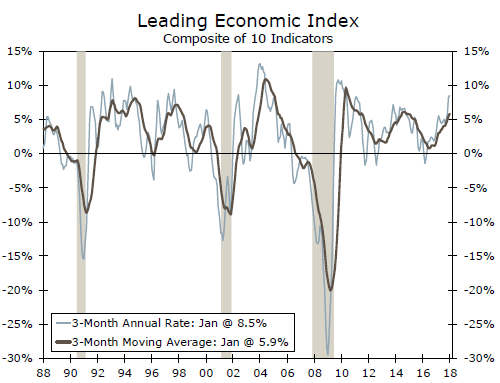
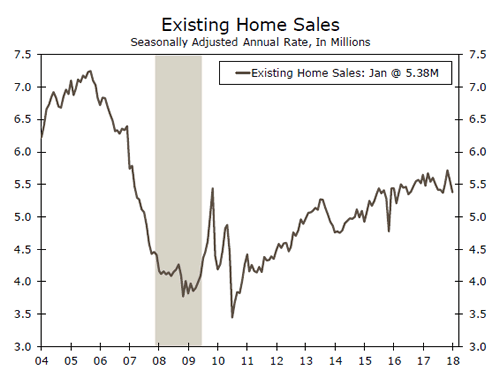
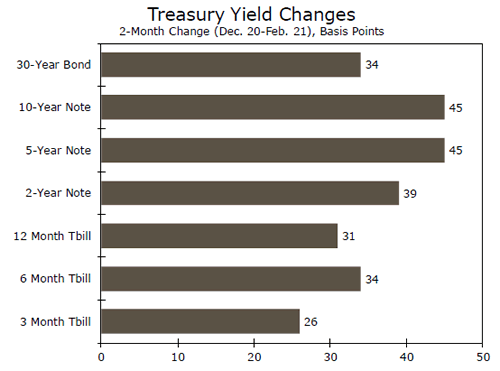
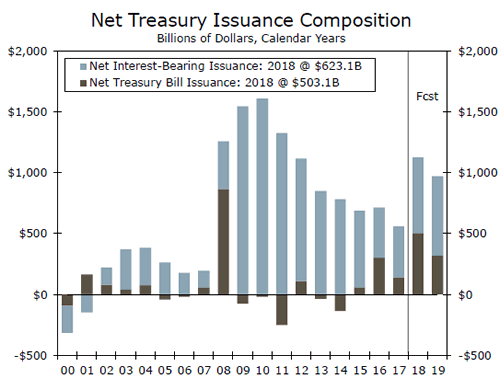
U.S. Outlook
New Home Sales • Monday
New home sales slipped in December to a 625K-unit pace, a drop of 9.3 percent from November. The end-of-year slip largely reflected a correction from October and November, which spiked following the hurricanes this summer. The South, which was impacted by storms, was behind much of the volatility. The lower sales volume during winter months makes for exaggerated movements in the seasonally adjusted readings.
Continued strengthening in the underlying domestic economy has fueled demand for home sales. Inventory of existing home sales remains very tight, so demand for new homes is elevated. The very positive readings in surveys of home builders’ confidence supports the notion that sales in 2018 will be strong. Higher interest rates and changes in the tax law, however, may take a bite from the momentum, though the impact will likely be marginal.
Previous: 625K Wells Fargo: 665K Consensus: 650K
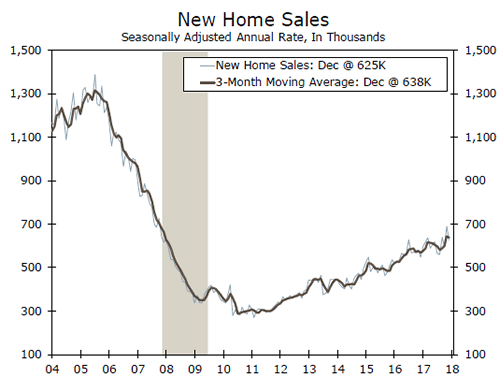
ISM Manufacturing • Thursday
The ISM manufacturing index showed the expansion in factory activity continued in the first month of 2018. The index was a strong 59.1 in January, slightly down from December but still among the highest readings of the cycle. Indices for production and new orders slipped very slightly but were still in comfortable expansion territory. Other components pointed to an uptick in backlogs and supplier delivery, which also shows a solid pipeline of future activity going into Q1.
Factories are benefitting from the strong global demand, evidenced by a continued climb in the new export orders reading which is now tied with its cycle high first hit in 2010. Manufacturers are noting greater price pressure, which reinforces our view that inflation is firming to a trend that supports further tightening by the Fed.
Previous: 59.1 Wells Fargo: 58.1 Consensus: 58.6
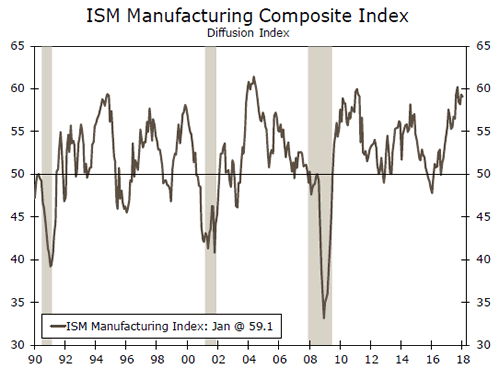
Personal Income and Spending • Thursday
Income and spending growth were both on a positive trajectory at the end of the year, each posting a 0.4 percent increase during the month. Income growth has been robust in recent months, driven by rising wages and salaries. The job market continues to expand even as the unemployment rate drifts lower. Wages and salaries were up 0.5 percent in December, helping to push disposable income up by 0.3 percent. Wage and salary growth likely continued in January, as evidenced by that month’s jobs report. Inflation as measured by the PCE deflator was benign, trimming 0.1 percentage point.
Real personal spending growth outpaced real disposable income growth in December, as consumers’ savings rate drifted to a new cycle low. Consumers continue to finance consumption with a lower savings rate, which is a testament to consumers’ optimism about the economic outlook and future income gains.
Previous: 0.4% & 0.4% Wells Fargo: 0.4% & 0.2% Consensus: 0.3% & 0.2%
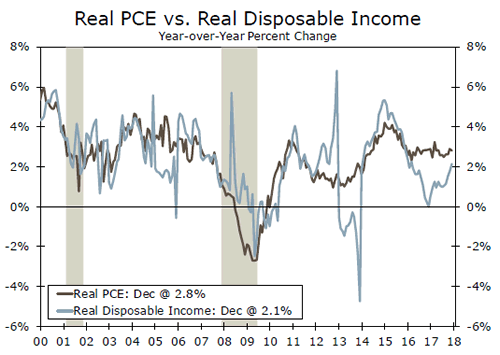
Global Review
Weighing Their Next Moves, Central Banks Eye the Data
- In South America this week, data from the Brazilian central bank showed the economy strengthening in December. Taking a three-month moving average, the economic activity index is growing at its fastest year-ago pace in nearly four years.
- Weekly earnings growth in the United Kingdom picked up slightly to end 2017, but employment growth was slower-thanexpected and the unemployment rate ticked higher.
- Inflation data for Japan and Canada showed a gradual firming in price growth in January. December retail sales in Canada were a dud, however, with much of the weakness concentrated in housing-related sectors.
Weighing Their Next Moves, Central Banks Eye the Data
In South America this week, data from the Brazilian central bank showed the economy strengthening to end 2017. The central bank’s economic activity index rose 1.4 percent over the month, topping the Bloomberg consensus. Taking a three-month moving average, the index is growing at its fastest year-ago pace in nearly four years, when the descent into recession began. A stronger global economy and a commitment by the central bank to reduce interest rates have helped drive positive momentum for the Brazilian economy. The main policy rate declined to 7.0 percent in December, a 725 basis point reduction since October 2016. Brazil will report its Q4 GDP figures on March 1st.
The U.K. labor market gave off mixed signals this week, as average weekly earnings growth pick up slightly at the end of last year (middle chart). The unemployment rate ticked higher from 4.3 percent to 4.4 percent, however, as employment growth over the October-December period disappointed, rising by 88,000 jobs relative to expectations for a gain nearly twice that size. The Bank of England noted in its most recent policy statement that the U.K. economy "has only a very limited degree of slack," and slowing job gains and rising wages would be consistent with minimal spare capacity in the labor market. As we have seen throughout the developed world this cycle, however, pay gains have been slow to materialize in the face of low unemployment. Though this week’s strengthening in wage growth is encouraging, the lack of a truly robust print suggests the Bank of England will remain in wait and see mode for now as it weighs another rate hike.
Inflation data for Japan and Canada showed a gradual firming in price growth in January. The national CPI rose 1.4 percent in Japan on a year-over-year basis, up from 1.0 percent in December. Excluding fresh food and energy, CPI inflation rose 0.1 percentage point to 0.4 percent. Though far from mission accomplished for the Bank of Japan, this week’s print brings core inflation up to its fastest pace in the past 18 months. In Canada, headline CPI inflation slowed slightly from December’s pace, but by less than the Bloomberg consensus expected. Core inflation strengthened/held steady depending on which of three reported measures considered (bottom chart). On balance, however, the higher-than-expected print suggests some modest building price pressures in Canada.
Data on retail sales in the Canadian economy were also released this week, with a largely underwhelming result. Sales fell by 0.8 percent in December, a much larger decline than the 0.1 percent fall forecasted by the Bloomberg consensus. Housingrelated sectors saw some of the largest declines, with furniture & home furnishing sales falling 3.9 percent in December and electronics/appliance stores sales declining 9.1 percent in December. Building material sales were flat in the month. Some of this weakness was due to strength in October/November, and seasonal adjustment factors may have influenced these colder weather months. That said, given the concerns surrounding the hot Canadian housing market, sales in these sectors will bear close watching in the months ahead.
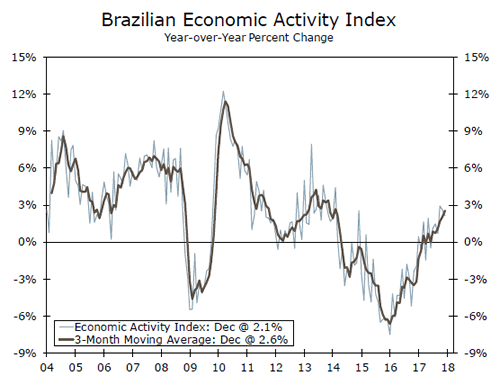
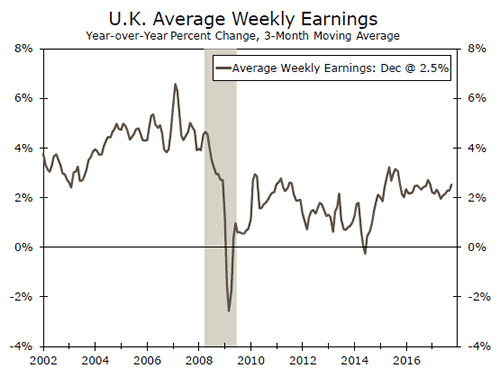
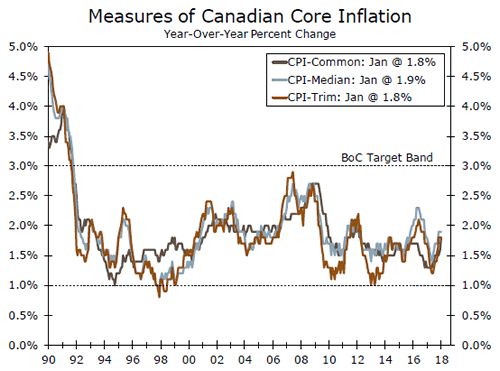
Global Outlook
China Manufacturing PMI • Tuesday
Although Chinese manufacturing production has remained in expansion territory over the past couple of years, it continues to be relatively weak. According to the national manufacturing PMI as well as the Caixin manufacturing PMI index, manufacturing production is not showing signs of breaking out anytime soon.
On Tuesday, we will have a chance to look at the national manufacturing PMI for the second month of the year. Analysts are expecting it to come in a bit lower than the January print, but for it to remain above the 50 demarcation level.
On Wednesday we will also get the Caixin manufacturing index, which is also expected to come in a bit lower than the January print. Clearly, neither index will move the market if they come in as expected as the country’s economy continues to slowly adjust to a lower, and sustainable, rate of growth.
Previous: 51.3 Consensus: 51.2
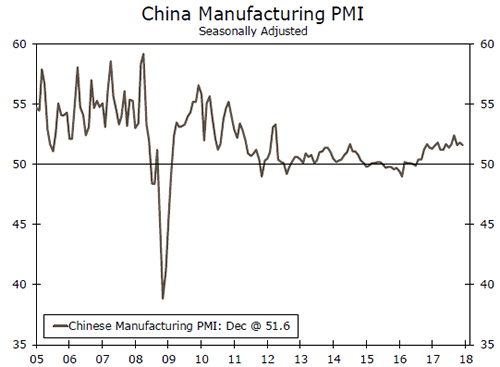
U.K. Manufacturing PMI • Thursday
The U.K. manufacturing sector has been expanding since early 2016 and analysts are expecting this trend to continue with the February number expected to be higher than January’s 55.3 reading. The U.K. manufacturing sector is not alone in this strength as many developed economies, including the United States, have demonstrated robust performance for the manufacturing sector as the global economy continues to expand.
On Tuesday of next week we will also have a chance to look at the GfK consumer confidence index for February. The index has been on a downward trend since mid-2015 and recorded a value of -9 in January. However, the -9 reading was an improvement from the prior month so a continuation of this trend will definitely be positive news for the U.K. economy even if the number remains in negative territory.
Previous: 55.3 Consensus: 55.0
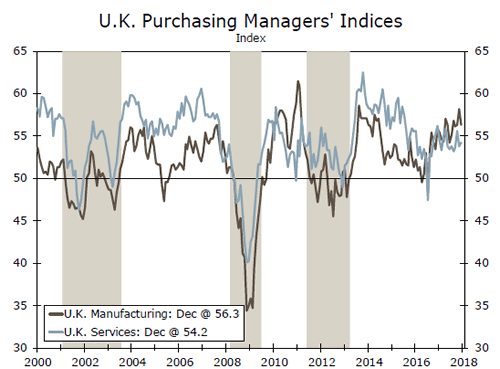
Brazil Q4 GDP • Thursday
Brazil is scheduled to release Q4 as well as whole-year 2017 GDP results on Friday and we expect the economy to have continued to slowly recover. Our forecast for the whole of 2017 is 1.0 percent growth, which is not great but markedly better than the economy’s performance over the past two years.
Last week we had a peek at how the GDP release may look as Brazil released the monthly economic activity index which showed the economy to have increased also by 1.0 percent. This means that economic growth for the last quarter of the year is expected to come in a bit higher than 2 percent on a year-over-year basis. Analysts have bumped up economic growth expectations for Brazil for this year and for 2019, so the release will enable us to determine which sectors may be leading this relatively strong recovery after so many years in the red. Our take is that both domestic demand and external demand will continue to lead.
Previous: 1.4% Wells Fargo: 1.9% Consensus: 2.8% (Year-over-Year)
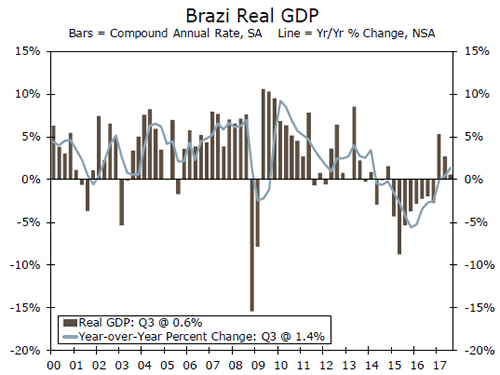
Point of View
Interest Rate Watch
When Inflation Models Don’t Work
January meeting minutes showed Fed officials were a bit more upbeat about the near-term outlook for growth following the recently passed tax bill, although most members continued to advocate for only a gradual pace of tightening. While the committee generally agreed that inflation would move up over the next couple of years, members were split about the timing and whether the near-term risk was that inflation would soon overshoot the Fed’s 2 percent goal or continue to fall short.
The persistent shortfall of inflation from the FOMC’s target in recent years led to a staff briefing to review commonly used models of inflation. The discussion focused on two channels of inflation that have long held sway over policymakers—resource utilization and inflation expectations.
Traditional theory suggests that when resources become relatively scarce, price pressures follow. Yet, research presented by Fed staff highlighted the difficulty in measuring the magnitude and timing of slack on inflation. Making forecasting all the more difficult is that the relationship between slack and inflation appears to be nonlinear. In other words, inflation picks up more meaningfully once a certain threshold is crossed—but there is tremendous uncertainty over where that threshold lies.
Inflation expectations have been an important factor in forecasting given their role in businesses’ decisions to change prices and labor’s demand for wages. Steady inflation expectations make the FOMC’s goal of "stable prices" easier, but expectations look too anchored in recent years. Through cyclical fluctuations, the trend in inflation has been stable at a little less than two percent, suggesting the Fed may need to un-anchor expectations if they are to help reach the Fed’s 2 percent goal.
All told, the discussion highlights that policymakers are still struggling to understand the stubbornly low inflation environment of recent years. Without a firm grasp of what drives one of their two mandates, the current path outlined for the fed funds rate could change meaningfully as inflation developments unfold.
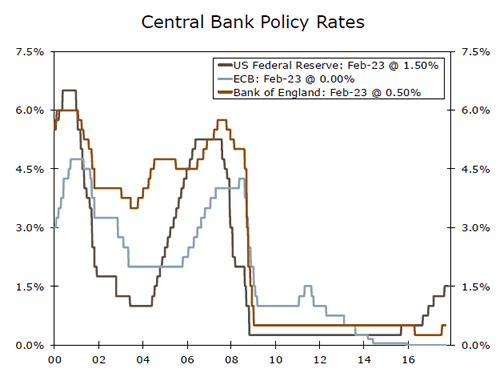
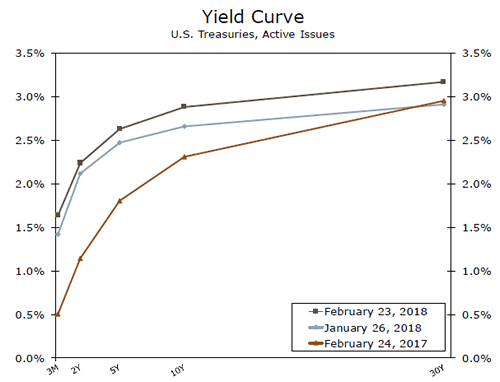
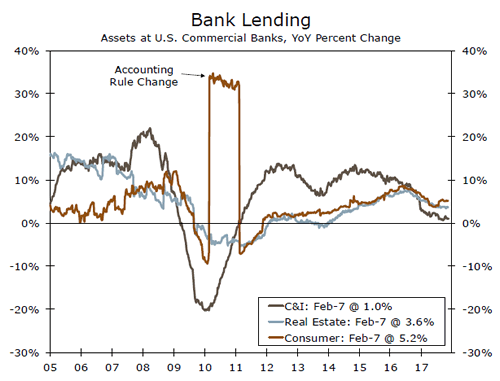
Credit Market Insights
Global Household Leverage Rising
Earlier this week, we released a report examining rising household debt and debt servicing ratios (DSR), and if this should be cause for concern in the global economy as many central banks normalize policy (Rising Household Leverage: Should We Be Worried?). In our view, rising household debt and DSRs is not a cause for concern of global recession.
Household debt-to-GDP has risen to 75 percent in advanced economies, up from just 60 percent at the turn of the century. However, this growth has not been broad based, with countries such as Norway, Canada and Korea increasing more than 20 percent, while the United States and Spain have each decreased by about the same magnitude. As global central banks are shifting towards more hawkish policy, the cost of debt will rise, which could cut into consumer spending. However, the significant decline in global interest rates since 2008 means most advanced economies have room to grow until surpassing prior DSR levels. Countries with the highest sensitivity of their DSR to interest rates, such as Denmark, Australia, Norway and Portugal have variable rate debt structures, whereas the United States, with low sensitivity, typically relies on fixed.
In all, rising household leverage in the midst of a reversal of accommodative global central bank policy should not sound the alarm for global recession, at least not at this time. It is more likely that this issue will be contained to individual nations.
Topic of the Week
Americans & Housing According to the 2016 SCF
Homeownership among Americans today remains well below peak levels seen in 2004. According to the results of the 2016 Survey of Consumer Finances (SCF), only 63.7 percent of all U.S. families owned a home in 2016, down from 65.3 percent for the 2013 survey and from the all-time high of roughly 69 percent during the 2004 survey (top graph). Meanwhile, both the median and the mean value of homes for families with holdings were reported to still be recovering from the heights that existed prior to the Great Recession.
In specifically addressing the survey results pertaining to the evolution of homeownership rates, we evaluate the rate of homeownership by reviewing the different segmentations (either by income, age cohort, family structure, or by education) that the survey has utilized in quantifying overall housing market conditions.
We find that, according to the SCF, it is clear that no matter how we segment and assess American families, families continued to shy away from owning a home until 2016. These subdued levels of homeownership since the Great Recession are perhaps a lingering consequence of not only the run-up, but, more fundamentally, of the collapse in the housing market. As the next (2019) SCF will not be published until 2021, we will review additional indicators and try to assess the current consumer view in its relation to the housing market and particularly to the homeownership rate.
However, despite the continuous decline seen in the U.S. homeownership rate since just before the Great Recession, it appears that the rate of homeownership has finally turned a corner since 2016 (bottom graph). As home prices have continued to move higher, and homeownership continues to be a big component of many Americans net worth, we suspect that the homeownership rate will continue to rise slowly over the next several years.
